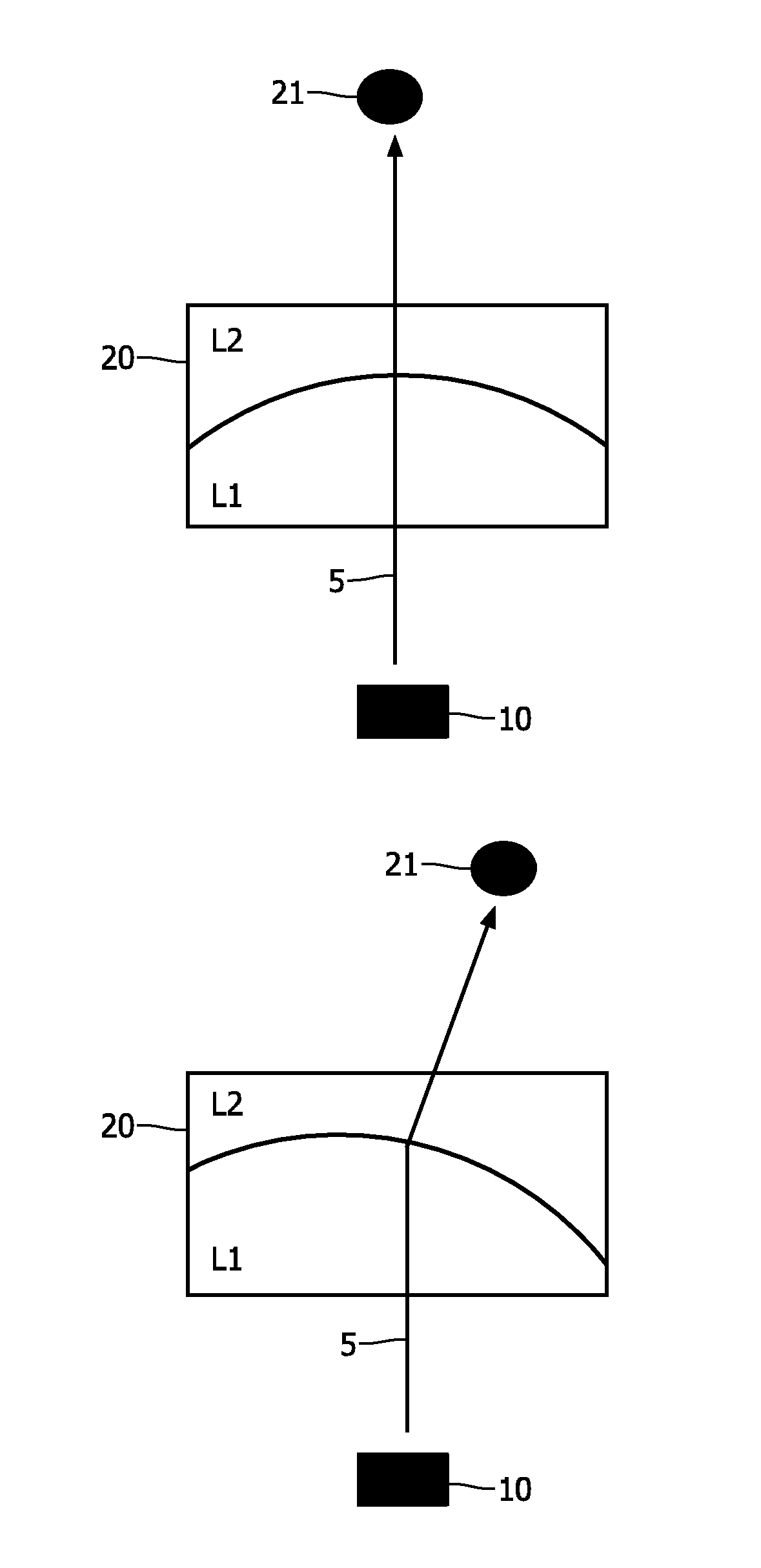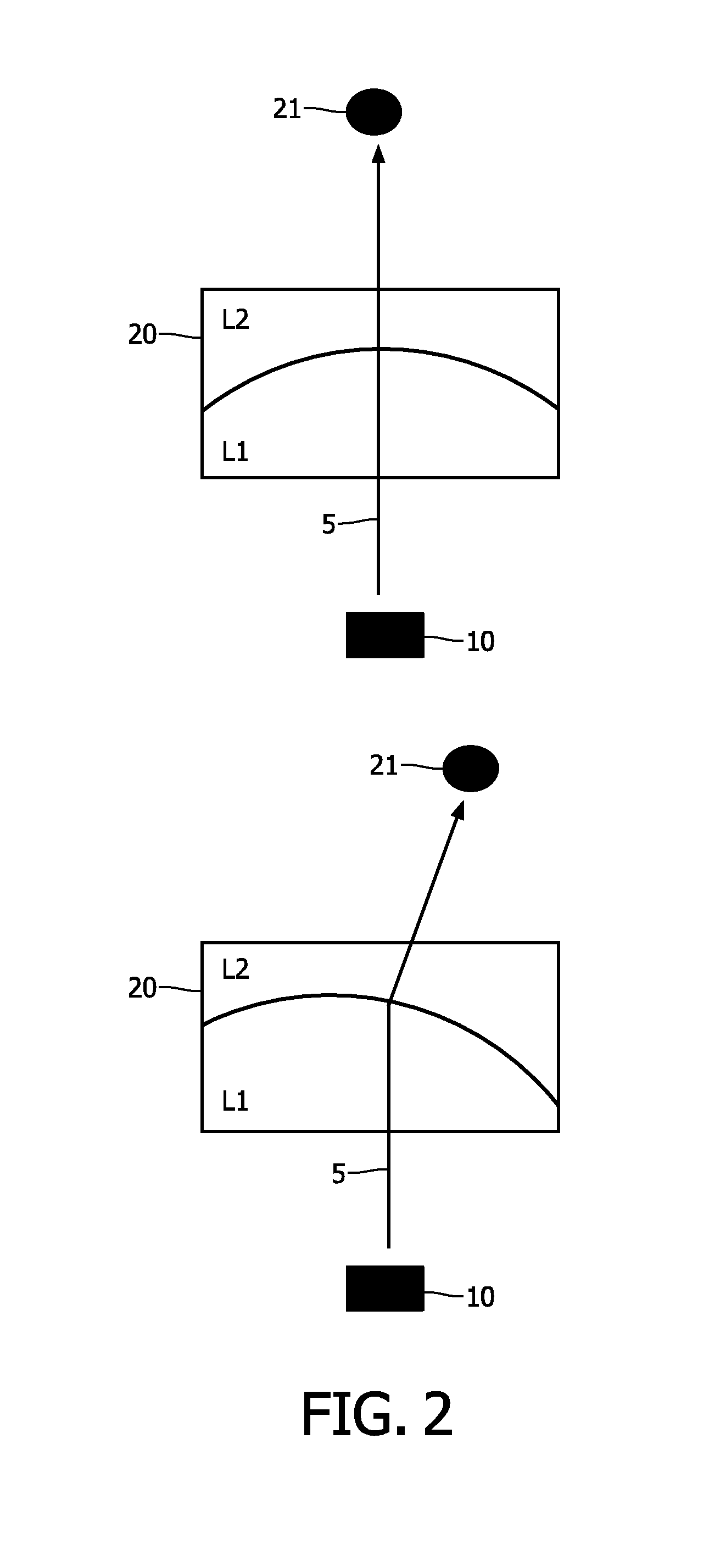Acoustic device for ultrasonic imaging
a technology of ultrasonic imaging and acoustic device, which is applied in the field of ultrasonic imaging acoustic device, can solve the problems of inherently limited effective viewing angle, large size of the transducer, and generation of undesired signals or reverb, and achieve the effect of reducing, alleviating or eliminating on
- Summary
- Abstract
- Description
- Claims
- Application Information
AI Technical Summary
Benefits of technology
Problems solved by technology
Method used
Image
Examples
Embodiment Construction
[0042]FIG. 1 shows two schematic drawings of refracting ultrasound the interface between two immiscible liquids. In both parts of the figure, the acoustic pulse 5 is emitted from the transducer 10 as also indicated by the arrows originating from the transducer and continued on the other side of the acoustic interface 7. On the side of the transducer 10, the first liquid L1 is positioned, the first liquid together with the second liquid L2 define the acoustic interface 7. The acoustic interface is typically formed due to immiscibility of the two liquids in an electrowetting lens, but the acoustic interface could also be defined by a membrane or similar separating the two liquids, or, more generally, the two fluids apart. It should be noted that the acoustic interface 7 is for illustrative purposes given as a straight interface, hence no focusing power is present. In typically applications, the interface will be curved or formed as a meniscus. The transducer 10 may be embedded in the ...
PUM
 Login to View More
Login to View More Abstract
Description
Claims
Application Information
 Login to View More
Login to View More - R&D
- Intellectual Property
- Life Sciences
- Materials
- Tech Scout
- Unparalleled Data Quality
- Higher Quality Content
- 60% Fewer Hallucinations
Browse by: Latest US Patents, China's latest patents, Technical Efficacy Thesaurus, Application Domain, Technology Topic, Popular Technical Reports.
© 2025 PatSnap. All rights reserved.Legal|Privacy policy|Modern Slavery Act Transparency Statement|Sitemap|About US| Contact US: help@patsnap.com



